
How to Start an Animal Sanctuary
Do you love animals and want to learn how to start an animal sanctuary? This guide will help you get started with some important information to consider, including what to know about providing shelter, veterinary care, and food; dealing with legal issues; raising money; and promoting adoptions.
Table of contents
Introduction
Shelter
Medical care
Food
Legal issues
Fundraising
Dealing with people
Adoptions
Education
In closing
Resources
Introduction
You are reading this resource because you care about animals. You’ve probably also taken in a stray animal or two, provided them with care and love, and brought kindness into their lives. Whether you are saving five or 5,000, you are making a difference to each and every one of them.
Caring for animals requires patience, love, time, money, and a lifetime commitment. The animals you rescue bring with them different needs and experiences, and the demands on you will be substantial. But the rewards are worth every minute of care. And with this guide, we are hoping to help you understand exactly what “every minute of care” really means.
We at Best Friends Animal Society do not claim to have all the answers. Indeed, we have made many mistakes. But we welcome this opportunity to share the knowledge we have gained over many years of taking care of animals.
Opening your own sanctuary involves interacting with people, raising funds, building facilities, dealing with legal issues, and more. But before you begin to think about all that, we strongly encourage you to do the following three things:
- Visit and volunteer at a sanctuary or shelter near you. Best Friends is always open to visitors and volunteers. Just contact us and we’ll help you plan your experience with us and answer all of your questions to the best of our ability. If you would like to volunteer closer to your home, we might be able to help you locate no-kill sanctuaries near you.
- Plan. It is advisable to have a plan in place before you start. Here are some basic questions that need answers:
- Which species of animals are you planning to shelter — dogs, cats, horses, birds, or other?
- How many animals are you planning to shelter?
- Where will you house these animals?
- Who will help you 24 hours a day, seven days a week?
- What will it cost you in time and money to rescue these animals?
- Be realistic. How many animals can you really handle? Think about your current life and the effect taking care of animals will have on it. Money and space are not the only issues; you’ll want to consider your time and your commitment, too.
Shelter
Starting an animal sanctuary and providing shelter for the animals means you need land and buildings. It is helpful at this point to decide what kind of animals you will be rescuing. This will determine how large a piece of land you will need and what you will require for housing the animals.
Land and zoning
Once you’ve selected some suitable land, find out what the zoning laws are for that land. Depending on where you’re trying to build, you’ll need to contact either the city or county offices. If there are existing buildings on the land, a building inspector might be able to advise you about zoning.
Zoning laws regulate how land is used, how many animals are allowed, and what species you can have on it. Agricultural zoning is the most open to animals. But even that type of zoning doesn’t cover exotic animals.
Zoning is only one of the issues to consider in the purchase of land. You also need to consider your neighbors’ rights. How close are they? Housing dogs can be noisy, and if you don’t have a buffer zone, such as land or trees to dissipate the sound, your neighbors can legally file a complaint and perhaps force you to close down your operation.
Leasing land does not offer any stability for the animals. You don’t want to be in the situation of having to relocate a large number of animals if a lease is not renewed. So it is important for the sanctuary itself to own its land. Problems can arise when an individual owns the land. If there is a falling out between that person and other sanctuary personnel, the animals could be in jeopardy.
You also need to consider the terrain. Is the land prone to flooding? Is the property accessible to the public? Is there water and power on the land? If not, can it be brought in easily, or can alternatives be provided in the form of solar units and water storage tanks? Are the access roads passable all year round?
There are a lot of questions to ask in relation to a piece of land you are looking at. It is best to ask them all up front before getting into a situation that might prove to be unsuitable for what you have in mind.
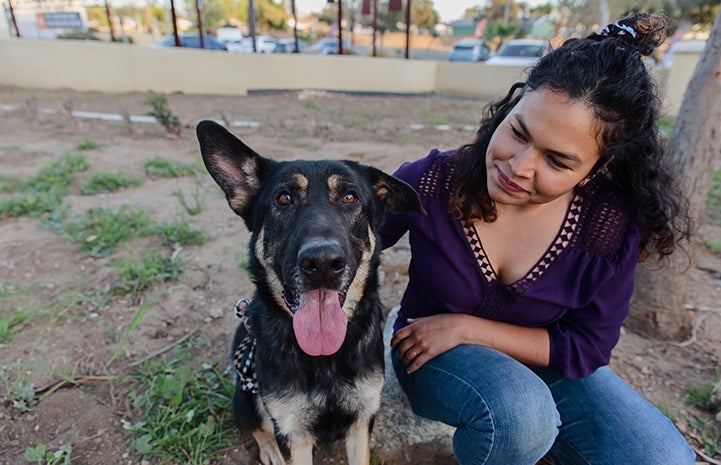
Buildings
You might find land that has one or more buildings on it. You might be able to adapt the buildings for your uses, but it’s likely that you’ll have to start from scratch. Think about what kind of facilities the animals need to have a good quality of life.
Unlike a traditional shelter, where the animals are there for a short time, you will need to think in terms of lifetime care. It’s not satisfactory, for example, to house dogs in single runs for years on end. To have a satisfying life, dogs need the companionship of humans and other dogs.
Cats also love to be with their own kind, and their permanent housing should take this into account. Unless there is a health or safety issue, all the animals in your care should have friends with whom to share their lives.
However, it is best to keep cats and dogs as far away from each other as possible. Cats can be stressed by being housed too close to dogs. Even constant barking in the background can create stress-related health issues for cats. So take this into consideration when planning the layout of your facilities.
You will also need to create intake isolation facilities. To protect your resident population from exposure to disease, you’ll need to have a place to house any incoming animals for a period of time. During that time, you will be able to assess each animal’s health and temperament. These facilities can be smaller because they will not be the animals’ permanent dwellings.
If you already have the complete health and temperament history of an animal coming into your care, you can waive the two-week isolation period. We have found it helpful, however, to keep the animals in a separate area until they get used to the new routine, new diet, and new personnel. It makes merging them into the general population easier.
If you do not have an architect to assist you at this stage, there are many kennel and cattery plans that can be adapted for your unique situation. Information about such plans is available through Shelter Planners of America. Also, visits to other sanctuaries will help you see what works and what doesn’t.
Finally, each species has specific housing requirements. Doing some research early on will help you to plan effectively. Here at Best Friends Animal Sanctuary, we have housing not only for dogs and cats but also for rabbits, indoor and outdoor birds, horses, chickens, goats, sheep, and potbellied pigs.
Medical care
This can be a make-or-break area when starting an animal sanctuary. Every animal you rescue will need some medical attention. It could be as minor as making sure the animal’s vaccinations are up to date or as major as orthopedic surgery on a leg or hip. You will need to be prepared financially, emotionally, and physically to deal with sickness, injury, and disease.
Finding a veterinarian
Having one or several veterinarians working closely with you will make all the difference in the quality of medical care you can provide for the animals in your charge.
If you are lucky enough to link up with one or more veterinarians who are sympathetic to what you are doing, they can help you with discounts on medicines and procedures. And some might even be able to do pro bono work for you.
If you do not already have a veterinarian that you work with, visit your local vets. Outline your plan and enlist their support. Many sanctuaries are able to employ a veterinary technician who can, under the direction of a veterinarian, take care of some of the basic day-to-day medical treatments.
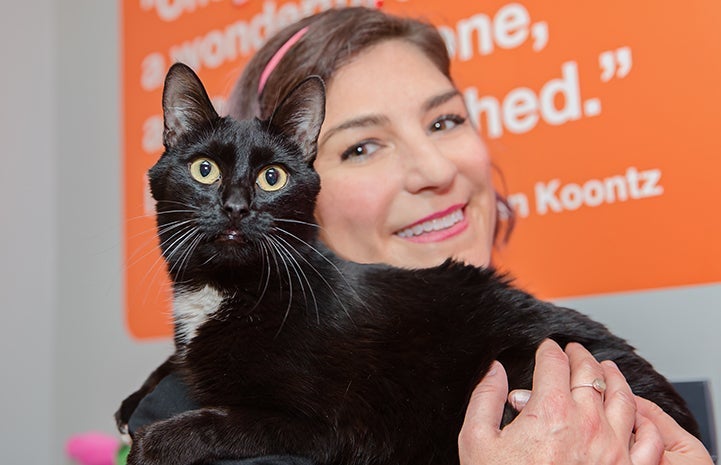
Spay/neuter
We strongly recommend that every animal sanctuary be linked to an active spay/neuter program. Overcrowding in shelters is the reason we create sanctuaries for homeless animals, so one of the first priorities is to try to prevent more of these animals from coming into the world.
When possible, the sanctuary itself should offer these services, not only to sanctuary animals but also to the general public. Best Friends Animal Sanctuary, for example, operates a spay/neuter program for the local area. And every animal who comes to the Sanctuary is spayed or neutered before being adopted.
ASPCA Pro has a helpful booklet on spay/neuter operations and equipment. To find veterinarians who participate in low-cost programs, call 800-248-SPAY or visit SpayUSA. A referral network operated by North Shore Animal League America, SpayUSA has names of low-cost programs all over the country.
Vaccinations and medications
Your vet might be able to help you get some supplies at cost. Also, some feed stores sell basic medications, and many of the pet-supply catalogs and websites carry a variety of supplies at reasonable prices.
Food
It is important to feed good quality food to the animals in your care. Because food will be a constant expense, getting food donated on a regular basis will help defray costs. But this often requires a lot of legwork and coordination, a good reputation, and a willingness to take whatever they want to give you.
The large pet-supply stores and grocery stores often have broken bags to donate. They usually require that you have a tax-exempt number and nonprofit status so that their donation is tax-deductible. If there are any pet food distributors in your area, you can ask to be put on their list of groups to receive donations of dog or cat food.
The only problem with donated food is that you might get a mixture of brands and types of food. In our experience, cats do better if their diet is both high quality and consistent. Dogs, being natural scavengers, can tolerate changes in their diet more easily. These choices will be up to you and your budget.
Legal issues
Legalities might appear to have nothing to do with your desire to rescue animals. However, it’s an important part of what you hope to accomplish. If you don’t ensure that the legal side of starting and operating an animal sanctuary is done correctly, you could jeopardize your whole operation.
Nonprofit status
Tax exempt, nonprofit, 501(c)(3) status is acquired by filing the necessary forms with the IRS. You have to incorporate as a nonprofit in your own state before you can apply for 501(c)(3) status. It is helpful, but not essential, to have a professional (an attorney or accountant) do the paperwork. See the Resources section at the end of this guide for information on starting a nonprofit corporation.
There are many advantages to having nonprofit status:
- Donors of goods, services, or money can claim their gift as an offset against their taxes, which might increase how much they give.
- Having nonprofit status lends credibility to your organization.
- It ensures proper separation between the charity and personal finances.
Once you have completed the necessary paperwork, the nonprofit status can take around three months to obtain. You will be issued a three-year provisional tax-exempt status subject to fulfilling IRS requirements and submitting a Form 990 annually with the government. Form 990 details the money taken in and the money spent on behalf of the charity. If your organization has annual gross receipts between $50,000 and $200,000, you can file a Form 990-EZ, the IRS form required for midsized tax-exempt organizations.
It is important to keep good financial records because without them, your nonprofit status could be revoked by the IRS. After three years, when the IRS is satisfied that you are running a legitimate nonprofit, you will be granted a permanent 501(c)(3) status.
Zoning
We covered this area in an earlier section relating to the acquisition of property. But it bears repeating: Make sure that the place where you set up your sanctuary is zoned for this work. The welfare of the animals in your care is at stake; you don’t want to be required to move your whole operation because of a zoning issue.
Insurance
We recommend that you carry liability insurance. Insurance can give you peace of mind around visitors and volunteers should someone fall or get bitten by an animal. All states require you to have your staff covered by workers compensation insurance. Depending on your operation, there are also other types of insurance that you might need.
For more details about buying insurance, see the Best Friends publication on animal rescue insurance.
Attorney and/or accountant
It is wise to find an attorney and/or an accountant with nonprofit knowledge and sympathy for your cause. Though legal fees can be expensive, good professional advice is key to running your sanctuary correctly in the eyes of the law.
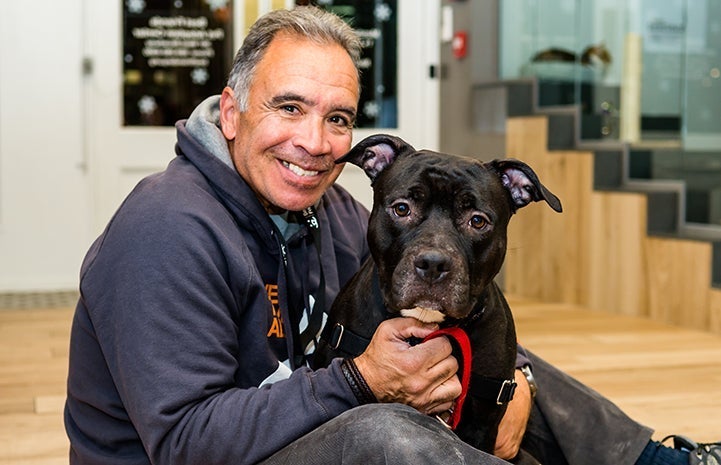
Home starts with you
Release forms
There are several areas where some kind of release form is appropriate. A release form lays out potential problems or specific requirements, making a person aware of issues or requirements involved in adopting an animal, working with animals, or having an animal undergo a surgical procedure (like a spay or neuter).
For example, in your adoption contract you can cover the limits of your responsibility for the health and behavior of an adopted animal. When you receive an animal, have the owner sign a release form stating that the animal is now the property of your organization.
You might wish to have any volunteers who are working with the animals sign a waiver, indicating that they know that working with animals can be unpredictable. In our spay/neuter program, we include a release clause for surgery in our admittance form. If you plan to board animals at your facility, then a release form would be advisable for that, too. You might want to talk to an attorney about which release forms or waivers would be appropriate for your sanctuary.
Kennel licenses
Some municipalities require a kennel license, so find out ahead of time if this requirement affects you. Licenses are hard to get in some areas. For example, in some municipalities, all the neighbors must agree to your housing of animals before a license will be granted.
Wildlife and birds
There are many regulations covering the housing and rehabilitation of wildlife and wild birds. If you want to be involved in this area, contact a local wildlife rehabilitator and find out what state and federal regulations govern this work.
Fundraising
To start and then continue to run a sanctuary, you need money. The amount you need depends on the scope of the sanctuary you are planning. You’ll want to develop a financial plan that includes details on:
- The number and species of animals you will care for
- The housing facilities that will need to be built and/or renovated
- The cost to house and feed the animals
- The cost to provide medical care for the animals
- The cost of employees’ salaries
- The cost of insurance
- Any other miscellaneous costs (advertising, vehicles, attorney fees, etc.)
Planning in advance for the money needed up front and monthly will ensure that the animals receive the care they need.
You’ll be doing fundraising for two basic areas:
- Operating expenses: These are the continuing daily expenses of feeding the animals, paying the staff, providing medical care, etc.
- Capital expenses: These are for fixed assets, such as buildings, vehicles, an information database, etc.
There are many ways to raise funds. Below are some suggestions based on what we have tried here at Best Friends.
No matter what you think it will cost to save one or many animals, it will always cost a lot more! So it’s a good idea to have a reserve fund in your budget. |
Raising funds for operating expenses
To operate the sanctuary, you’ll need a continuing and reliable source of funding. This might be a private endowment that guarantees a certain amount every year or perhaps an annual grant from a foundation. But unless you know for sure that the foundation will deliver each and every year, you should be wary in case you suddenly find yourself with a lot of empty mouths to feed and a well that’s gone dry. Indeed, most foundations do not offer funding for operating expenses.
Starting a membership program: Like most other successful animal organizations, Best Friends relies on member donations to meet the operating costs of the Sanctuary. (We use the term “member” to describe our supporters. They are not voting members.) The basic components of a membership program are:
- A way of reaching people and inviting them to sign up as members: You could start with setting up a table or booth at a popular store. Or you could put together a list of animal lovers in your community and send out a mailing.
- A way to keep in touch with your members and let them know what’s going on at your sanctuary: Print newsletters are the traditional way of doing this, but e-newsletters are increasingly popular. It’s a good idea to send out your newsletter in both print and electronic format.
- A simple computer database that keeps track of what you’ve sent out, who’s responding, and what the donations are
You can make your membership program as simple or as complex as you like. You can invite people to sponsor some of the animals, hold membership drives, and buy mailing lists to gain more members.
Your membership program is the backbone of your fundraising efforts. People give money to something they believe in and to people they know. Developing your membership is the most important thing you can do in this whole area. Keep your members informed and included in your work. In the beginning, just a one-page letter can keep your members and supporters in touch. As you grow, your literature can expand to a printed newsletter or e-newsletter.
People will support you because they like what you are doing for the animals, so keep that focus in your publications. Stories of your rescues and adoptions are a lot more interesting to your members than details of your board meetings. Ask yourself what you like to read and hear about. We have found that people prefer to be uplifted rather than made to feel guilty by what they read about our work.
Make sure that your publications are appealing and well-prepared. Professional-looking literature conveys to the public that you know what you are doing. If you can, use professional expertise (a graphic or e-newsletter designer). If you don’t have the money to spend on such things, ask around. Someone might know someone who’s willing to donate their services, or perhaps one of your supporters works in graphic design or publishing and can help you put it all together. And print a lot of copies! You need to get the word out about your plans, ideas, and work to as many people as possible.
Keeping your members is as important as recruiting new ones. Send thank-you notes for the donations you receive (no matter how small), provide prompt responses to questions asked, and assist members with animal problems. Dealing with your members in a professional way will give them confidence in your whole operation and ensure that they will continue to support you as best they can.
Sophisticated but easy-to-use database programs are available and make this job a lot easier. Here at Best Friends, we have an office staff to answer mail and send out information to our members. These tasks are as much a part of our work for the animals as feeding and poop-scooping because without our members, we could not do any of it.
Using the telephone: It’s a good idea to gather names, addresses, and phone numbers anytime you set up a table to disseminate information about your organization to the public. If someone includes a home phone number, give that person a call asking whether they'd like to be a member.
Keep these calls brief, and never pressure people into being part of the work. If they are interested in becoming members, outline the different levels of involvement, so they can choose for themselves.
You might also consider calling people if you haven’t heard from them for more than a year. They might simply no longer want to be involved, but often they’ve moved or have lost the address, so they appreciate the call. We have found that some people respond more to a phone call than to a letter. They like to be called, and they enjoy hearing about our work with the animals.
Your basic rule of thumb must always be: Never commit to caring for more animals than you can pay the bills for now. |
Using email and social media: These are good and inexpensive ways of keeping in touch with people, so it makes sense to use these methods of communication to inform your members about your work and to solicit support.
Using direct mail: Direct mail programs can help build membership, and soliciting donations via direct mail is the backbone of fundraising for many nonprofits. However, outreach via direct mail can be expensive. Consider finding a local business to donate the printing and someone to sponsor the mailing costs. Though the initial investment can be high, the long-term benefits of direct mail make it worthwhile.
Getting publicity for your cause: There are plenty of ways to get the word out in your local region. Heartwarming stories about animals are always welcome on TV and in the local newspapers. Most TV news programs end with a light piece about children, animals, or another human-interest subject.
If you can get your story on TV, make sure you have literature available so that if people call or email, you can send them more information. You should also be prepared for people calling simply to ask whether you will take their unwanted pet.
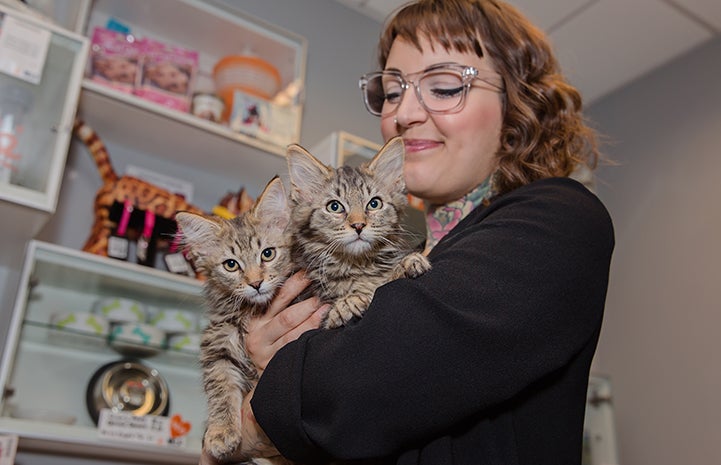
Raising funds for special projects
You’ll also need to raise funds for special projects, which might include doing a spay/neuter drive or adding a new building to your sanctuary. Various kinds of fundraising events can help you pay for these special projects. Here are some examples:
- Doing bake sales and car washes are good ways to get young people involved. Proceeds will probably not be large, but the events are always fun. Putting donation cans in stores around the neighborhood draws a small but steady income. You’ll need to have someone that you can rely on to go and empty them regularly.
- Setting up tables or booths outside popular stores are good ways to meet people, talk about what you’re doing, collect donations, and sign up new members all at the same time.
- Getting a percentage of one day’s profits from a store donated is another option. Stores will often donate a percentage of their sales to benefit the animals. You’ll need to help them promote the special day because the benefit to them is drawing more customers to their store.
- Selling products (T-shirts, hats, jewelry, and other items) can help raise funds. Many groups use the creative abilities of their supporters in this area.
- Doing benefit dinners, dog walks, fashion shows, and other larger-scale events can raise considerable amounts of money, but they also take a lot of time, good planning, advertising, and organization.
Every event requires staff or volunteers, and larger events require a lot of coordination. If you’re planning a larger event, find someone to coordinate who has experience with putting together these types of events. If you’re going to invest a certain amount of money in putting on the event, you want to ensure that you don’t just break even or lose money.
You might want to start with something simple and low-cost. Setting up a table outside of a busy grocery or pet-supply store is a fairly simple way to generate funds and add valuable names to your membership list. Make the tables look interesting with appealing photos of your rescued animals and lots of literature to give out.
Most stores are only too happy to help a community project, but you will need to ask the store manager for permission to set up outside the store. You’ll want to respect their wishes about table placement and on how you approach the store’s customers. If you develop a good relationship with the store’s management, they will be happy to have you return on a regular basis.
The Best Friends website has a number of resources on fundraising, including one with tips and ideas for animal shelter fundraising.
In-kind donations
Many companies are willing to donate goods and materials to a nonprofit organization. (See the guidelines for asking for product donations below.)
For example, lumber companies might donate surplus building materials. Paint and vinyl flooring can be relatively easy to acquire if you are not too fussy about colors or patterns. Many places have end runs or less attractive merchandise that they are happy to donate for a tax write-off. Hotels and motels change their bedding often, and we have found them to be very generous with the old blankets, sheets, and bedspreads. One of our members who loves to sew takes them and creates bed pads for use in the kennels and veterinary clinic.
Places that are not in a position to donate outright will often give a nonprofit organization a special deal. If you need something for your work with the animals, do some research and then call the company or store with the product you need and ask them to donate it. If that is not possible, ask for a discount or special payment schedule.
It never hurts to ask! People enjoy giving, and we have made some very good friends who give regularly. To make your members aware of what items you need, put together a wish list and publish the list in your newsletter.
One donation can lead to another. Once we began receiving large donations of pet food, we had a storage problem. One of our members in a nearby city was holding a yard sale for Best Friends, and one of her customers expressed interest in our work. They got to talking, and soon the customer promised that her husband would donate a large storage building, which he did — plus he supplied the labor to put it up. You never know whom you will meet at a yard sale!
And sometimes a donation is just serendipitous. When we were building the Sanctuary clinic, one of our staff happened to run into a friend who worked at a hospital in a nearby city. She told him that the hospital was about to demolish a wing to rebuild it in accordance with the new codes. We obtained permission to go in ahead of the bulldozers and retrieve whatever we could use. We came away with cupboards, doors, surgical lights, incubators, X-ray viewers, and a variety of other useful equipment. As you can imagine, this was a great boon to our new clinic.
Guidelines for asking for product donations
|
Dealing with people
Staff
Caring for animals is a 24/7 job — 24 hours a day, seven days a week. Don’t try to do it all yourself; you’ll need help. How much help you’ll need depends on how many animals you will be caring for. People sometimes burn out because they underestimated the stress and work involved in caring for so many lives. You can avoid burnout by getting some help early on.
Although we are doing this work because we love the animals, we also have to work closely with people. We often hear people say that they would rather be around the animals than be with people. This is understandable, given the way some people behave! But staff are people and so are the folks who will be coming to you in distress about not being able to care for their pets. And keep in mind that your financial supporters are people, too.
So there is no getting away from it; people are going to be central in your efforts to save animals. With that in mind, you will want to have staff and volunteers who are pleasant, articulate, and considerate, both in person and on the other end of the phone. Remember, they will be representing your sanctuary.
It is all too easy to allow yourself to become angry and overwhelmed by some individuals' disregard for what is so dear to us. But this approach is shortsighted and self-defeating. It is best to adopt a position of kindness and compassion to all — including the people. After all, that is what ultimately helps the animals.
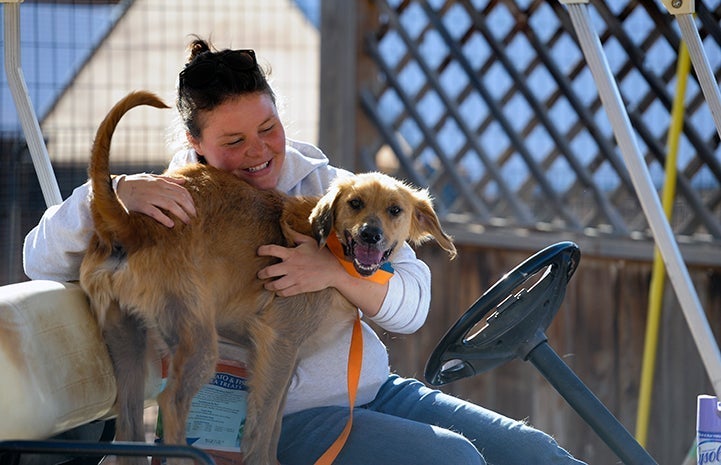
Best Friends employs staff in a variety of areas: animal care, medical care, clerical work, accounting, fundraising, building and grounds maintenance, counseling, outreach programs, adoptions, and education — to name some of them. Best Friends also offers paid internships during which participants can gain hands-on experience and valuable skills.
"Every encounter is an opportunity to share your philosophy, especially by your example. At the beginning of Best Friends, I was prone to lecture everything that moved! I found that this approach was not very effective since people would tune me out after a while. Listening, sharing, and being kind seemed to work better. It was not always easy, but I would just remember what was best for the animals in the long run and bite the bullet, so to speak."
— Faith Maloney, Best Friends co-founder
Volunteers
Some programs cannot exist without the help of volunteers. In fact, many of them are run entirely by people who volunteer as much time as they can. Even if you have some full-time staff, having volunteers on the team enables you to do more, and it’s a wonderful way of including people in your work.
Although volunteers are not on the payroll, they do require “payment” of sorts. People like to be noticed and acknowledged for what they contribute; they like to be listened to and appreciated. So be prepared to show that you value your volunteers. It doesn’t have to be time-consuming or expensive — a simple thank-you can go a long way.
Sometimes a volunteer just doesn’t work out. If you’ve done the best you can to resolve the problem, it might just be that this person is not compatible with your way of working or with the rest of the team. Just because someone is giving their time does not mean that you have to accept their involvement. Thank them for their help, explain that there’s a problem (without accusing them of anything), and tell them that you think it’s best if they stop working with you. It might be an awkward situation, but the sooner it’s done, the better.
For more information, see the Best Friends guide on recruiting volunteers for nonprofit organizations. Good and consistent volunteers are like gold and can make a big difference in the success of your sanctuary. Treat them well.
Adoptions
Finding a good home for an animal in your charge is a wonderful thing to do. A fact of life in a no-kill sanctuary is that unless animals find homes, they live out their natural lives in your care. This means that you will not be able to respond to other animals who need your help.
Finding new homes for as many animals as possible is a goal we should all pursue. There are many ways to go about doing adoptions. You can adopt out from your own facility, post photos and descriptions of your animals online, and/or use one of the major pet superstore chains that offer space to nonprofit animal groups.
This guide on rehoming pets covers some basics in screening for a new home. You are going to be looking for a permanent home for each animal, with people who have the time and resources to care for this new member of their family.
As an organization, you will want to work out your policies and procedures for adopting animals. These will include your standards for a new home, any medical guarantees, your return policy, and much more. Study other organizations’ adoption policies, and when you see something you like, ask to use that aspect in your own work. Animal groups will often share their adoption paperwork, such as adoption applications or contracts, as long as you change the name on the documents to your group’s name.
You will also want to make sure you have a database or filing system to record adoptions; contact information about the adopters; and records of spay/neuter surgeries, vaccinations, and microchip identification numbers. At Best Friends, we like to include a photo of the animal in the adoption records database because it might be hard to recall each face over time.
Training
Many of the animals coming to your sanctuary will have behavioral issues. You might be asked to take biters, chewers, diggers, barkers, and all-around badly behaved dogs. Cats might bite, have litter box issues, or have other quirky behaviors.
It’s vital that you work with a trainer to prepare the animals to be successfully rehomed. A lot of behaviors are very responsive to training, and we usually suggest that the adopter find a trainer to continue the training program once the animal is rehomed.
Best Friends has a resource on how to find a good trainer. Some people decide to take one of the many courses offered in animal training as part of their preparations in starting a sanctuary. Check out the courses offered to make sure the methods taught suit your own beliefs in this area.
Networking
At Best Friends we work with many other agencies to place animals and collaborate on lifesaving programs. Cultivating partnerships with other rescue organizations is a wonderful opportunity to work together for the good of the animals.
Purebred animals
There is a large network of breed rescue groups around the country. If your facility takes in an animal of a particular breed — for example, an Irish wolfhound — a rescue group for that breed might be located nearby. The American Kennel Club has an up-to-date list of these groups, and most of them have a waiting list of people looking to adopt.
Giving people the necessary information can often keep pets in their homes. |
Education
Humane education is another vital part of your animal sanctuary work — and not only for children. Every encounter with the public offers an opportunity to educate and inform. A lot of problems people experience with their pets stem from lack of knowledge about the animals and their behavior. So giving people the necessary information can often keep pets in their homes.
Part of your education program could be visiting local schools and sharing your insights about animals and how to take care of them. This can be a fun experience for everyone, and there are a lot of materials available to teach children of all ages. Another way to educate both children and adults is to have them visit your facility. Taking a guided tour will help them understand the plight of homeless pets firsthand.
Another option is to have an internship program. In Best Friends’ internship program, young people who are interested in careers in the animal welfare field spend time working alongside us at the Sanctuary, which gives them good hands-on experience of what is involved.
We also invite people of all ages who are thinking of working in animal welfare to come and spend some time here at the Sanctuary to see whether this is really what they want to do. This experience often helps people to focus on their goals and clarify their vision.
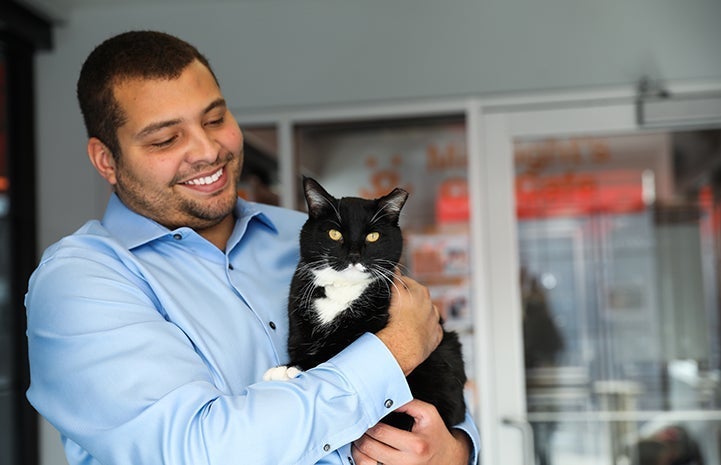
In closing
Our goal at Best Friends Animal Society is to provide quality care for animals who are waiting to be matched with new homes. But it is not always an easy job. Dealing with painful situations can be very stressful. It helps to have friends with whom to share your feelings and frustrations.
We cannot emphasize this enough. It is only too easy to burn out when we see the animals whom we dearly love being treated with cruelty and neglect. So don’t try and take on the whole burden by yourself. If you become overwhelmed, who else is going to help the animals?
Dealing with ignorance is very distressing, especially when it affects the innocent. It is only too easy to slip into negative attitudes and emotions toward those who don’t treat their pets with love and respect. But it is a shortsighted approach. Hatred and negativity can eat you up, and soon you will not be able to do the work.
So share your feelings with those of like mind. Take time out to be good to yourself. Prepare to be doing this work over the long haul because it will take time to change some people’s attitudes toward the animals.
We’re all in this together.
When you’re feeling down, remember that we have all come a long way. Spaying and neutering are becoming the norm for the majority of people who have pets. Adopting from a shelter or rescue group is becoming a cool thing to do. News stories about cruelty to animals draw a huge outcry from the public. More and more people are choosing not to wear fur or eat meat. Large companies that test products on animals are finding themselves hurting in the marketplace as more and more people refuse to buy their products.
There is still a long way to go, of course. But if each of us does what we can to promote a world of compassion and kindness, one day we will see a very different world. It will be a world where we are all living in harmony with each other and with nature. Sounds too good to be true? Maybe, maybe not. We will never know until we try.
Please share your own experiences with us here at Best Friends as you embark upon meeting your goals. And we in turn will share them with others. Together, we will all make the difference.
Best wishes from all of us at Best Friends.
Planning for the futureBesides knowing what your limits are now, you should also plan for the future. There will come a day when you can no longer take care of the animals. This might happen a long time from now, but it could also happen tomorrow. Who will take care of the animals you have rescued? We hear sad news too regularly of a sanctuary or small rescue group that has failed. Someone else, such as a nearby humane society, has to step in and try and rescue the animals. Perhaps the founder has died or become incapacitated without making provision for the animals. Or maybe they couldn’t say no to taking in more animals and consequently became overwhelmed. Early on, you need to have a long-term plan in place for the animals in your care. It is not realistic to think that larger sanctuaries like Best Friends can step in and take in hundreds of new animals when the crisis occurs. (We have our limits, too!) We recommend that you do not take on the care of more animals than you can afford right now. Of course, this is hard to do because the need is so great, but it is even harder to cope with a failed situation with many lives involved. So get together with everyone involved in starting up your sanctuary and devise a written plan that covers a variety of eventualities. It can be amended as you go along and as your organization changes, but it will give you some security should a crisis occur. |
Resources
Adoptions
Fundraising
Pet products
Publications
- Your Dog, a monthly newsletter for dog enthusiasts published by Tufts University School of Veterinary Medicine
- Catnip, a monthly newsletter for cat enthusiasts published by Tufts University School of Veterinary Medicine
- Best Friends magazine includes stories about animal groups around the country, which helps you keep up with what others are doing as well as stimulating ideas for your own endeavors. People also appreciate the positive approach to animal stories and the fun style of presentation.
- There are many magazines that focus on specific animals. Even though many are targeted toward the breeding community, these magazines do contain a lot of information that is useful to those of us in animal rescue.
Networking
- Best Friends has a large network of partner organizations that collaborate with each other to save more lives. Search for a network partner near you.
Shelter planning and building
Spay/neuter
Starting a nonprofit
- If you want to do the paperwork without the expense of an attorney, Nolo Press has a book called How to Form a Nonprofit Corporation that walks you through the steps in straightforward language.
